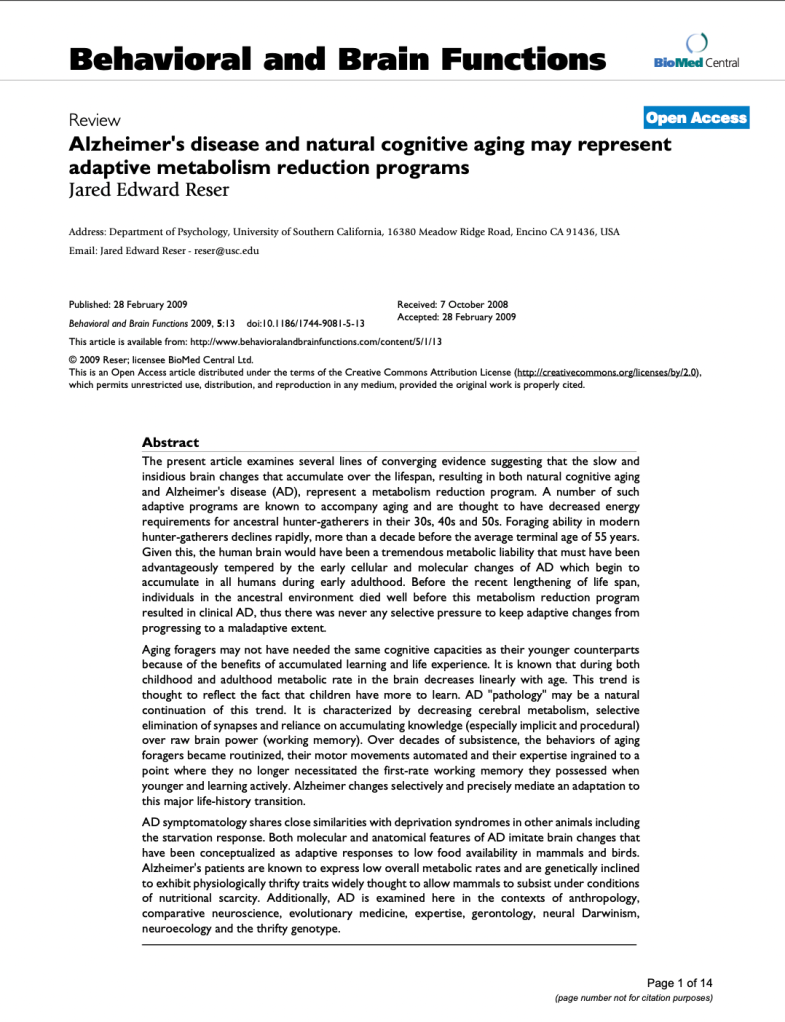
Published by Behavioral and Brain Functions in 2009
Cite As:
Summary
Abstract
The present article examines several lines of converging evidence suggesting that the slow and insidious brain changes that accumulate over the lifespan, resulting in both natural cognitive aging and Alzheimer’s disease (AD), represent a metabolism reduction program. A number of such adaptive programs are known to accompany aging and are thought to have decreased energy requirements for ancestral hunter-gatherers in their 30s, 40s and 50s. Foraging ability in modern hunter-gatherers declines rapidly, more than a decade before the average terminal age of 55 years. Given this, the human brain would have been a tremendous metabolic liability that must have been advantageously tempered by the early cellular and molecular changes of AD which begin to accumulate in all humans during early adulthood. Before the recent lengthening of life span, individuals in the ancestral environment died well before this metabolism reduction program resulted in clinical AD, thus there was never any selective pressure to keep adaptive changes from progressing to a maladaptive extent.
Aging foragers may not have needed the same cognitive capacities as their younger counterparts because of the benefits of accumulated learning and life experience. It is known that during both childhood and adulthood metabolic rate in the brain decreases linearly with age. This trend is thought to reflect the fact that children have more to learn. AD “pathology” may be a natural continuation of this trend. It is characterized by decreasing cerebral metabolism, selective elimination of synapses and reliance on accumulating knowledge (especially implicit and procedural) over raw brain power (working memory). Over decades of subsistence, the behaviors of aging foragers became routinized, their motor movements automated and their expertise ingrained to a point where they no longer necessitated the first-rate working memory they possessed when younger and learning actively. Alzheimer changes selectively and precisely mediate an adaptation to this major life-history transition.
AD symptomatology shares close similarities with deprivation syndromes in other animals including the starvation response. Both molecular and anatomical features of AD imitate brain changes that have been conceptualized as adaptive responses to low food availability in mammals and birds. Alzheimer’s patients are known to express low overall metabolic rates and are genetically inclined to exhibit physiologically thrifty traits widely thought to allow mammals to subsist under conditions of nutritional scarcity. Additionally, AD is examined here in the contexts of anthropology, comparative neuroscience, evolutionary medicine, expertise, gerontology, neural Darwinism, neuroecology and the thrifty genotype.